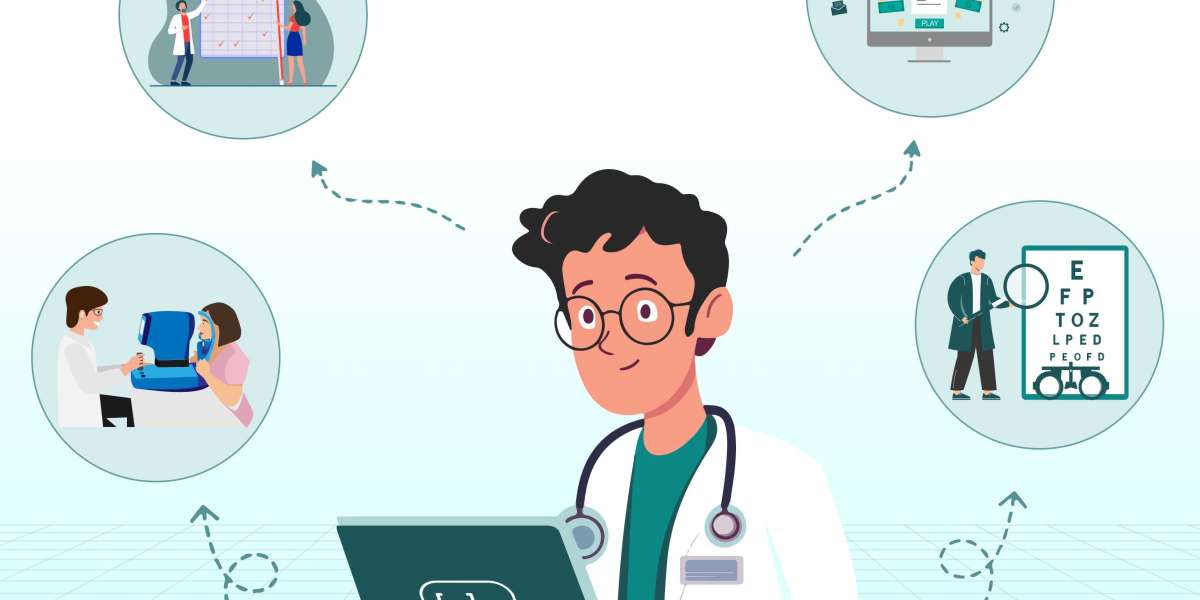Does Your EHR Connect with the Rest of Your Systems?
Imagine You’re midway through a busy day, juggling multiple platforms—a diagnostic imaging device here, a patient scheduling system there, and separate billing software that barely syncs with your existing tools. Each task feels like running uphill.
Then A patient arrives for surgery, but their diagnostic test results aren’t available in your system. The imaging device, scheduling software, and billing system aren’t communicating seamlessly.
The result? Delays, frustration, and a backlog that disrupts your workflow. This scenario isn’t rare. Many ophthalmology practices grapple with the challenge of disconnected systems, unaware of how much time, money, and effort they lose.
But here’s the silver lining: integration capabilities in modern Ophthalmology EHRs can resolve this chaos.
Why Is Integration Non-Negotiable?
Healthcare is constantly evolving; adoption of technology is at peak in the USA. Federal initiatives like the Office of the National Coordinator for Health Information Technology (ONC) and the Centers for Medicare Medicaid Services (CMS) have placed a strong emphasis on interoperability—the seamless exchange of data across systems.
Why? Because it directly impacts care quality, patient safety, and operational efficiency.
A 2021 ONC report revealed that 87% of healthcare providers found electronic data exchange to be crucial for clinical decision-making. Additionally, CMS mandates like the Promoting Interoperability Program incentivize practices to adopt technology that facilitates smooth communication across devices and platforms.
In ophthalmology, where precision and timely decision-making are paramount, integrated EHR systems ensure clinicians have access to comprehensive patient data—diagnostic images, surgical schedules, prescriptions, and billing—at their fingertips. This eliminates manual data entry, reduces errors, and allows practices to focus on what truly matters: delivering exceptional patient care.
How does having a fully integrated EHR impact your care delivery?
1. Streamlining Diagnostic Imaging: Ophthalmology thrives on diagnostic precision. Advanced tools like OCT or fundus cameras play a vital role in patient care. However, when these devices aren’t integrated into the EHR system, clinicians waste valuable time manually uploading or transferring images.
An integrated Ophthalmology EHR Software solves this by offering FHIR-based interoperability. For instance, a provider can instantly access real-time OCT images within the patient’s chart, enabling quicker diagnoses and smoother communication between care teams.
2. Reducing Administrative Burden: Administrative inefficiencies cost US healthcare billions annually. According to HealthIT.gov, fragmented systems force staff to spend hours reconciling data across platforms. In ophthalmology practices, this often means manually managing appointments, surgery schedules, and billing records.
An integrated EHR system consolidates these processes into one cohesive platform – So that your staff can focus on patient actively, leaving behind all the juggling with cranky systems trying to meet the basic requirements.
3. Improving Patient Outcomes with Analytics: Integration isn’t just about connecting systems—it’s about creating actionable insights. Modern Ophthalmology EHRs equipped with analytics can identify patterns in patient data, offering predictive insights that improve outcomes.
Imagine detecting the early progression of glaucoma by analyzing patient records over time. Integrated systems can flag subtle changes that might be missed otherwise, enabling proactive care and better outcomes.
Benefits of a Fully Integrated Ophthalmology EHR
1. Improved Clinical Outcomes: With data flowing seamlessly between systems, ophthalmologists can make quicker, more informed decisions. Whether diagnosing glaucoma or monitoring cataract surgery outcomes, integrated tools ensure no detail is overlooked.
2. Operational Efficiency: Automation reduces administrative burdens, from appointment scheduling to insurance claims processing. Practices can redirect saved time to focus on patient care and expanding services.
3. Enhanced Patient Satisfaction: Integrated systems provide a smoother experience for patients, from booking appointments online to accessing post-op care instructions via a personalized patient portal. This fosters loyalty and encourages word-of-mouth referrals.











